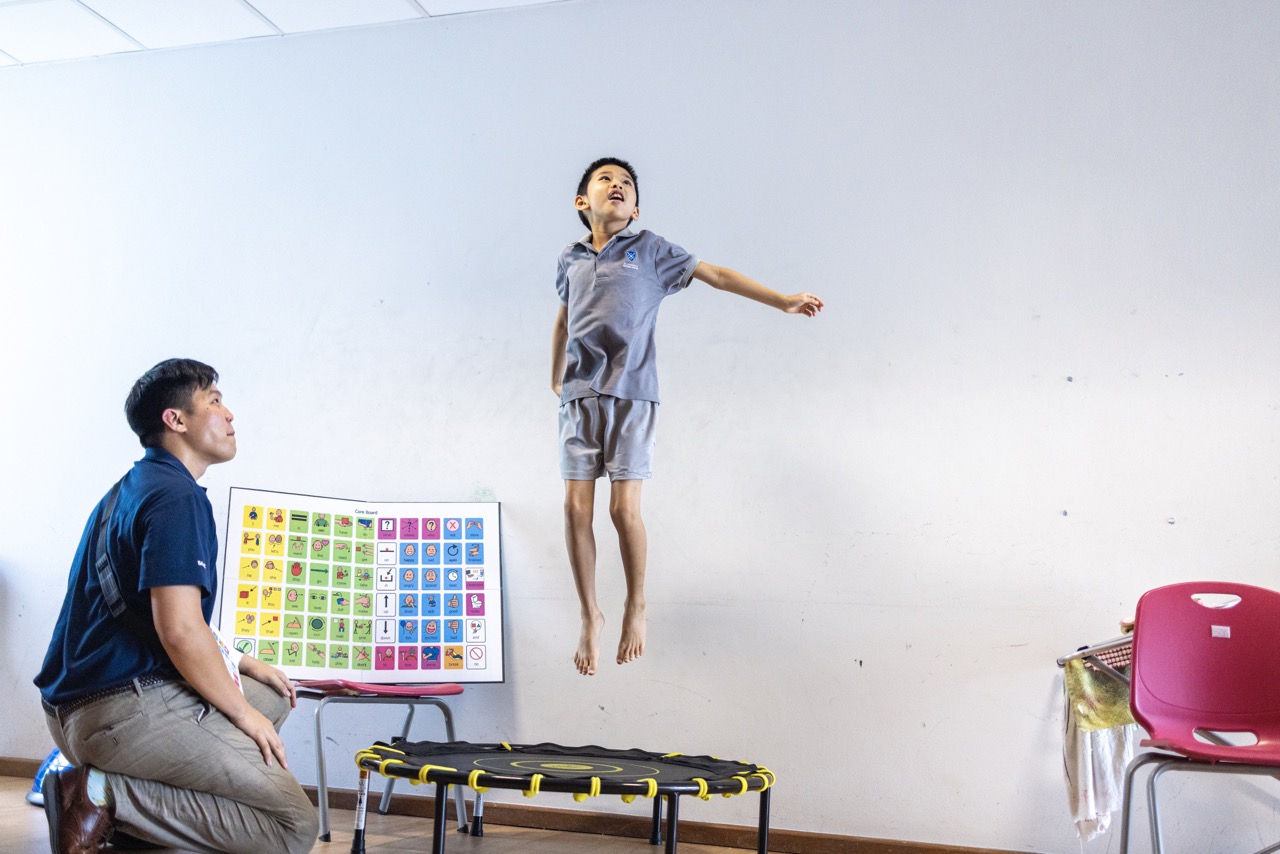If you’ve ever interacted with a person with autism, you may have noticed that they don’t always respond right away, or sometimes, not at all. Depending on their level of support needs, persons with autism often face challenges when it comes to communication.
They also often have difficulty understanding and responding to non-verbal cues, which can make communication challenging. This can lead to heightened anxiety, which in turn can result in behaviours of concern.
Interacting with persons with autism requires patience, understanding and respect for their unique communication and sensory needs. Here are some helpful tips:
Communicate Clearly & Respectfully
- Use simple and direct language
Avoid figurative speech, sarcasm, or ambiguous phrases. Describe the request. Tell them, “It’s raining very heavily”, versus “It’s raining cats and dogs.”. - Give them time to process
Pause after speaking and allow them to respond at their own pace. - Allow alternative ways of interaction
Depending on their communication abilities, persons with autism may prefer using visual aids or gestures, especially if they are non-speaking. - Be Mindful of Sensory Sensitivities
- Avoid overwhelming environments
This refers to environments that are highly stimulating i.e. bright lights, loud noises or strong smells. - Respect personal space
Some persons with autism may not be comfortable with physical contact. Do check in with their caregivers where necessary. - Offer accommodations
If they seem distressed, be prepared to offer them a space to regulate (if possible).
Educate Yourself & Promote Acceptance
- Learn about autism from reliable sources
Understanding their perspective helps build better relationships. - Advocate for autism
Share what you know with people around you.
It’s important to note that all persons with autism are unique, and may have different strengths and challenges when it comes to communication and social interaction. It’s important to work with each individual to understand their specific needs and develop strategies that work best for them. By approaching interactions with kindness and awareness, you can help create a more inclusive and supportive space for persons with autism.
If you’d like to support persons with autism and their families, you can do so by:
Donating to our programmes
Help us provide persons with autism with highly structured programmes and give respite to their caregivers.
Volunteering with SAAC
Give the gift of your talents and time when you volunteer with us. We welcome those with a heart to serve.
Advocating for Autism
Those on the autism spectrum are often misunderstood and excluded from the public eye. Mention us to friends & family.





